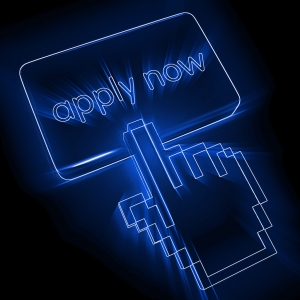Join our online community and be inspired to achieve your goals!
VIEW OUR FACEBOOK PAGEHow to create your best ever job application

Customising your job application to suit the specific requirements of a role is one of the most effective things you can do to secure an interview. When we talk about a ‘job application’, we’re referring to a collection of documents: your resume, cover letter, LinkedIn profile and response to any selection criteria or specific questions.
While you might think it’s too hard or time consuming to customise this content every time, we encourage you to look at your application from the recruiter’s perspective and ask yourself ‘What’s in it for them?’ Your application should immediately present you as someone who can add significant value in the role. If it doesn’t do that, you’re not giving yourself the best opportunity to succeed.
Follow these steps to create your best ever job application.
Step 1. Research: Read the job ad carefully. If possible, obtain a more detailed job description from the recruiter and identify exactly what’s required. Highlight skills or experience that seem important and make notes. If you know the company, view their website and search for any news or recent activity that may impact on the job. And take some time to understand the corporate culture. Emulating the kind of language the company uses and/or writing just one sentence in your cover letter referencing a current challenge or opportunity for the company could mean the difference between success and failure at this initial stage.
Step 2. Sell yourself: If you don’t show the recruiter you have what they’re looking for, you probably won’t succeed. This process is simple once you know their pain points (i.e. problems) because you can clearly demonstrate how you have the best solution. Again, customisation is important, so make sure your documents address as many of the role requirements as possible. Use previous successes and achievements to show how you’ve added value in the past.
We recommend including a strong, carefully crafted career profile as the first section of your resume that gives a snapshot of your skills and experience. This also applies to your LinkedIn profile summary – you can tailor that section to cover off the key skills and attributes required in the role you’re applying for. In LinkedIn it’s not necessary to do this for every role, but if there is a role you’re applying for that involves new, different or unique skills that aren’t covered in your profile, you should incorporate them.
Selling yourself throughout your job history is also important. Within each role listed on your resume, provide examples of projects, successes and accomplishments where you added value.
A cover letter provides another important place to ‘sell yourself’ and is a great opportunity to customise content to the specific role and clearly state why you think you’re the ideal candidate.
Step 3. Use keywords: Once you know the top attributes a recruiter is looking for in a candidate, you can create a customised checklist of key capabilities. Your resume should already contain a section highlighting your key skills or capabilities. To tailor this section, check the job ad for important keywords and incorporate those into your list, and re-order your list so the most important/relevant skills come first. You can go one step further by rewording those points to suit the role.
Again, this applies to LinkedIn too – check you’ve covered off the main areas within your ‘Skills and Endorsements’ section. Writing a customised cover letter also allows you to use keywords – and it’s one of the best ways to make your application stand out. Research has shown that you literally have seconds to make a good first impression. If a recruiter receives a large number of applications, having a cover letter that highlights key skills, experience and achievements that are highly relevant to the role you’re applying for will help you get noticed.
Step 4. Tweak your experience: For certain people, getting strategic about how they present their experience in their resume is a good idea. But we only recommend doing that in the following cases:
1) When recent experience is not relevant. You can reorder roles to prioritise relevant experience from your earlier work history. Simply create a new section called ‘Relevant Employment History’, then move your most recent and other irrelevant roles to a later section called ‘Other Employment History’. This ensures the recruiter sees your relevant experience first but the section title will make it clear why that experience is not recent.
2) When you have 15+ years’ experience. We usually recommend going back 10–15 years in your resume – so long as that job history provides a good picture of your experience in the context of the role you’re applying for. Any more than that will unnecessarily date you, while also potentially providing too much information for the recruiter to read. Think of your resume as a concise sales tool rather than a lengthy list of everything you’ve ever done. However, be guided by the job ad – if it says you need 20 years’ experience then include it.
3) When you’ve been out of work for some time. We generally don’t recommend including hobbies or other interests in your resume (you can list anything relevant on LinkedIn), but if you’ve been out of the workforce for a while – or you’re new to it – you could include experience outside of full-time work. Think about things you’ve done that highlight your suitability for the role, such as freelance, consulting or volunteer work. List them in a similar way to your other jobs, with the role, organisation, dates and description of what you did.
If you’re serious about landing a great job, preparing a customised application for every role you apply for is something you should make time for. While it might seem tedious, the reward outweighs the effort. Be selective about the roles you apply for and create an application that will make you stand out from the crowd.
Would you like help preparing a top-quality job application or LinkedIn profile that helps you secure your dream job? Our experienced writers can help you create a professional resume, customised cover letter and LinkedIn profile designed to make employers sit up and take notice. To find out more, read about our Services.

